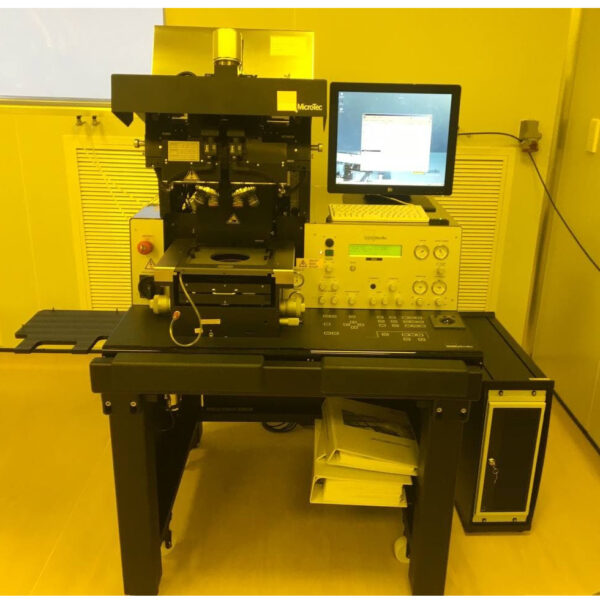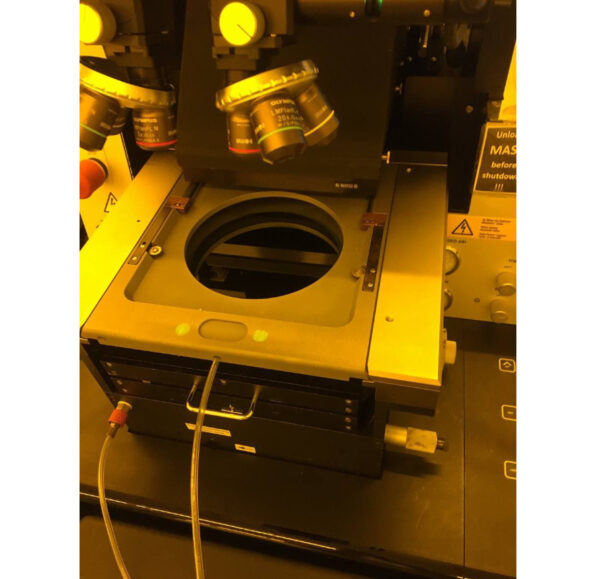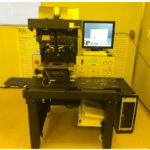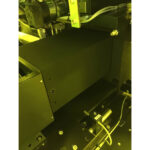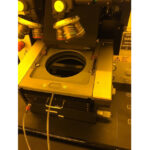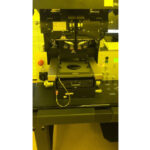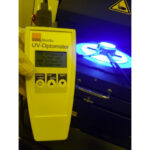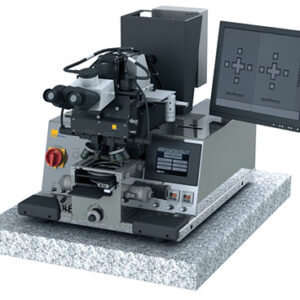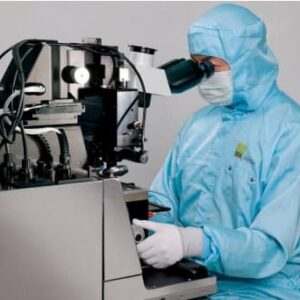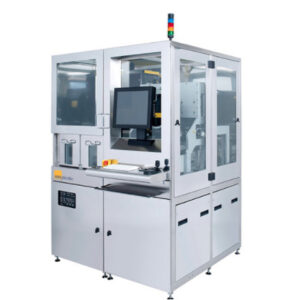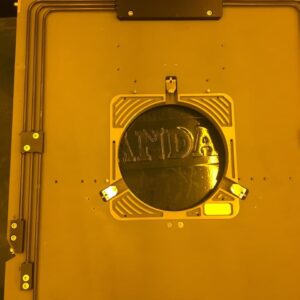MA/BA Gen4 Pro Series Mask & Bond Aligner
The MA/BA Gen4 Pro mask and bond aligner is the all-rounder of all SUSS MicroTec’s semi-automated mask alignment equipment, and thus offers a wide range of application possibilities. It supports substrate sizes of up to 150 mm and 200 mm. Thanks to numerous tools and options, as well as settable process parameters, it offers maximum flexibility for research and development or production processes. A fully developed design and leading edge technology make the MA/BA Gen4 Pro series the ideal platform to develop future technology. Thus setting new standards for MEMS, advanced packaging, 3D integration and compound semiconductor applications.
- Description
- Additional information
Description
HIGHLIGHTS
High resolution (HR) optics allows patterning of structures below 0.5 μm
Operator assisted and auto alignment permits down to 0.25 μm alignment accuracy
Advanced automatic functions for maximum process control
Process compatibility with automatic equipment
Optimized splitfield microscope with direct viewing and/or LCD flat screen options
| MASK AND WAFER/SUBSTRATE | |
| Wafer Size | 1″ to 150 or 200 mm |
| Max. Substrate Size | 150 x 150 mm or 200 mm x 200 mm |
| Min. Pieces | 5 x 5 mm |
| Wafer Thickness | max. 10 mm |
| Mask Size | standard 2″ x 2″ up to 7″ x 7″ (SEMI) or up to 9″ x 9″ (SEMI) |
| EXPOSURE MODES | |
| Contact: | soft, hard, vacuum |
| Proimity | exposure gap 1– 300 μm |
| Gap Setting Accuracy | 1 µm |
| Vacuum Contact | adjustable to -80 kPa |
| Modes | constant power, constant dose |
| Options | flood exposure, split exposure |
| EXPOSURE OPTICS | |
| Wavelength Range | UV400 350–450 nm UV300 280–350 nm UV250 240–260 nm |
| Exposure Source | Hg lamp 350 W – 1000 W (optional 5000 W) UV LED lamp house |
| Intensity Uniformity | < 3.5 % (200 mm) |
| ALIGNMENT METHODS | |
| Top Side Alignment (TSA) Accuracy | < 0.5 µm |
| Bottom-Side Alignment (BSA) | accuracy < 1.0 μm |
| TSA Focus Range | 1–400 μm (AL400 – motorized focus and image capturing) |
| Accuracy Bond Aligner | 2 μm |
| ALIGNMENT STAGE | |
| MA Movement Range | X: ± 5 mm Y: ± 5 mm Theta: ± 5° |
| BA Movement Range | X: ± 3 mm Y: ± 3 mm Theta: ± 3° |
| Resolution | 0.1 μm |
| TOPSIDE MICROSCOPE (TSA) | |
| 6 inch | X: 33–152 mm Y: + 18–100 mm Theta: ± 5° |
| 8 inch | X: 33–202 mm Y: + 18–100 mm Theta: ± 5° |
| BOTTOMSIDE MICROSCOPE (BSA) | |
| 6 inch | X: 20–150 mm Y: ± 22 mm focus: 6 mm |
| 8 inch | X: – 20–210 mm Y: ± 22 mm focus:6 mm |
| Width x Depth | 1350 x 1000 mm = 1.35 m 2 |
| Height | 1803 mm |
| Weight | ~ 750 kg |
| GRAPHICAL USER INTERFACE |
| Windows 10 |
| Unlimited Storage of Recipes |
| Remote Access Available |
| TOP SIDE ALIGNMENT (TSA) Where lithographic processes require the alignment of structures on only one side of the device wafer (e.g. RDL, micro-bumping and similar techniques), top-side alignment is used to align the fiducials on the mask with those of the wafer. Depending on the substrate properties, this can be achieved either using stored position data for the wafer or through live image alignment, as with the DirectAlign® system invented by SUSS MicroTec. Mask aligner for the highest level of alignment precision Clear and stable pattern recognition even under poor contrast conditions |
| BOTTON SIDE ALIGNMENT (BSA) Alignment of the structuring on the wafer back side with the structures on the front is required in processes in the field of MEMS, wafer-level packaging, 3D integration and imprint applications. Optical bottom-side alignment is normally used for this type of alignment. An integrated caera system detects the mask or stamp structures and the structures on the substrate back side, and aligns them with each other. The substrate position must be determined and stored prior to loading, since the substrate subsequently covers the mask target. This places specialized demands on the alignment system as a whole. |
| ENHANCING ALIGMENT PRECISION When stringent demands are made of overlay accuracy, the auto-alignment functionality of the standard system can be considerably extended. DirectAlign®, the SUSS MicroTec enhanced functionality for structure detection software, uses live images instead of patterns from an image memory system. The technology is based on the PatMax industry standard and achieves outstanding results. With the use of DirectAlign® on a SUSS mask aligner, an accuracy of 0.25 µm can be achieved |
| ASSISTED WAFER AND MASK LOADING Operator-assisted systems maintain a high degree of process control and reliability in combination with the advantages of manual wafer handling. |
| MANUAL ALIGNMENT is based on a manual or motorized alignment stage that can be precisely operated either via micrometer screws or joystick by the operator. |
| AUTO ALIGNMENT The COGNEX®-based system not only automatically recognizes wafer and mask target locations but also controls the movement of the alignment stage. The alignment runs fully automated without operator intervention. |
| ASSISTED ALIGNMENT represents the latest development for operator assisted, semi-automated alignment. During manual alignment the COGNEX ® based pattern recognition software continuously measures the achieved accuracy and reports it to the operator. With its sub pixel resolution the system supports highest alignment precision, prevents misalignment and maximizes yield. |
| DIRECTALIGN ® The software-assisted operation mode works with live images instead of stored alignment targets and reliably achieves accuracies down to 0.25 μm. DirectAlign is recommended where high demands are made on alignment accuracy. |
| HR AND LGO OPTICS The large gap optics (LGO) optics is optimized for thick resist processes with large exposure gaps and 3D lithography, offering a resolution down to 5μm. The high resolution optics (HR) is apt for contact and close proximity lithography with structures down to 3μm at 20μm exposure gap. For processes with high dose requirements on 150 mm wafers the exceptionally high intensity of the W150 HR optics facilitates high throughput. |
| DIFFRACTION REDUCING OPTICS Diffraction-reducing exposure optics are designed to compensate for diffraction effects in both contact and proximity lithography. Instead of using a plane wave as in other proximity lithography tools, it provides an angular spectrum of planar light waves to reduce diffraction effects. The selection of a proper angular spectrum improves structure resolution in the resist. |
| MO EXPOSURE OPTIC MO Exposure Optics® is a unique illumination optics system specifically designed for SUSS mask aligners. It is based on microlens plates instead of macroscopic lens assemblies. A simple plug and play changeover allows a quick and easy changeover between different angular settings, including the functionality of both classical SUSS HR (High Resolution) and LGO (Large-Gap Optics) illumination optics. The telecentric illumination provided by MO Exposure Optics improves light uniformity and leads to a larger process window. Yield enhancements are produced as a result. MO Exposure Optics also decouples the exposure light from the lamp source, so small misalignments of the lamp do not affect light uniformity. A decoupled light source saves setup and maintenance time and guarantees uniform illumination conditions during the entire lifetime of the lamp. |
| UV-LED LIGHT SOURCE The new lamp house concept from SUSS MicroTec convinces with efficiency — UV-LED light sources reach many times the service life of conventional mercury vapor lamps. Moreover, they no longer need to warm up and cool down — the LED is only switched on during exposure. These factors significantly contribute to comparatively low energy consumption. In contrast with mercury vapor lamps, no cumbersome disposal of hazardous waste is required. The SUSS UV-LED lamp house features the latest in technology and therefore meets the growing demand for environmental sustainability and energy efficiency. Cost-effectiveness The use of an LED lamp house significantly affects the operating costs of a mask aligner. The service life of an LED exceeds that of conventional lamps many times over, thereby lowering costs generated by changing lamps. Downtimes, the acquisition of new lamps, adjustments and the disposal of old material have all become a thing of the past. Guaranteed process flexibility Compared to conventional mercury vapor lamps, LED light sources not only work more efficiently but are also much more flexible to use. The UV-LED lamp house generally covers the same spectral region as mercury vapor lamps. The difference is that the UV-LED can switch specific wavelengths on and off. This eliminates the need to optically filter the light outside of the lamp house. Wavelengths are regulated via a programmed recipe which fulfills specific process requirements without filter change or recalibration. When interacting with SUSS MicroTec’s special MO Exposure Optics, the LED lamp house provides for maximum flexibility in process design. |
| WEDGE ERROR COMPENSATION (WEC) SUSS mask aligners are equipped with an enhanced WEC head system providing additional functionality. By direct and instant gap measurement during the stacking process, the parallelism between substrate and substrate, mask or stamp is reached with micrometric precision. This enables significant improvements in resolution compared to mechanical gap measurement. |

| Power Supply | |
| Power Voltage: | AC 230 V ± 10 % |
| Frequency: 50 – 60 Hz | 50 – 60 Hz |
| Vacuum: | – 0.8 bar |
| Compressed Air: | 5.5 bar |
| Nitrogen: | 1.5 bar |
| antivibration table |
| Clean room: Class 1000 |
| MEMS The highly uniform, light-shaping exposure optics of the MjB4is ideal for processing thick-resist MEMS applications. Features like bottom-side or infrared alignment (transmission or reflective illumination), bond alignment and the capability to process any type of substrate make the platform an enabling lithography tool for development and low-volume production of MEMS devices. |
| ACADEMIA The MjB4 is versatile and easy to use, which makes it the tool of choice for research applications. Whether deployed for nanoimprint lithography, bond alignment or thick-resist lithography applications, changeover to different processes is quickly executed, guaranteeing high flexibility. Optional add-ons such as auto and direct alignment offer special guidance and assistance for inexperienced operators. |
| 3D STRUCTURING The MA/BA Gen4 series can optionally be equipped with SMILE (SUSS MicroTec’s Imprint Lithography Equipment), an imprint lithography technology that allows very precise replication of both micro- and nanopatterns. SMILE is used in the field of 3D structures and optical lenses for wafer-level-cameras. |
| Mask holder | standard 2″ x 2″ up to 7″ x 7″ (SEMI) or up to 9″ x 9″ (SEMI) |
| Wafer Chuck | 1″ to 150 or 200 mm |
| Ojective | “Magnification is selectable Single Objective UMPL FL 5X/0.15 Single Objective UMPL FL 10X/0.30” |
| Vacuum pump | VACUUM PUMP (DOUBLE MEMBRANE) 220V/50HZ CPL Part no. G206200 |
| Suss UV light measuring probe 365/405NM for UV OPTOMETER |
| Silicon wafer 4″ , 6 “ |
| UV- Led Lamp house |
| High precision wafer-to-wafer alignment | Source-mask optimization is an illumination concept that combines best possible uniformity with fexibility to support target-adapted process solutions. It helps to reduce image errors due to diffraction or process effects. A two-pronged approach of customizing illumination filter plates and mask structure adaption helps to bring extended functionality to both, contact and proximity lithography processes. |
| Imprint lithography for full-surface patterning (SMILE) | For the transfer of patterns in the micro to nanometer region the MA/BA Gen4 series offers SMILE technology. There are two process types, of which the use depends on the desired resolution: + For imprinting of micro structures, the photosensitive polymer is deposited in the center of the substrate and then radially spread to its outer edge, filling the stamp cavities. The active control over the exact positioning of the process gap via closed feedback loop leads to high reliability in targeting residual layer thickness. + To imprint nanostructures, a flexible stamp is used to contact the center of a coated substrate and the contact is then radially widened. |
| Fusion bonding | Fusion bonding refers to spontaneous adhesion of two planar substrates. The preceding pre-bonding process is also accomplished in the bond aligner. After completing precise wafer-to-wafer alignment, the two wafers are brought into direct contact, thus initiating the fusion bond process in the bond aligner. |
| Bond Alignment | The MA/BA Gen4 series can be configured as a mask and bond aligner combination or as a bond aligner only. The BA Gen4 bond aligner aligns wafers and clamps them in fixtures to maintain position during manual transfer to SUSS wafer bonders. The innovative system meets customer needs for high precision, flexibility and repeatability, as well as low cost of ownership. The highly rigid and stable alignment stage of the bond aligner in combination with auto alignment options ensures reliable and accurate alignment of substrates. The proven SUSS MicroTec wedge error compensation system guarantees high planarity between wafers. The BA Gen4 series accommodates even the most demanding alignment processes in MEMS and LED production and growth markets like 3D integration. |
| LAB Simulation Software | SUSS version of LAB lithography simulation software incorporates all SUSS MicroTec optics solutions, such as HR-, LGO and MO Exposure Optics, including their individual characteristics. The software reduces the need for experimental layout optimization and simplifes process development. Together with MO Exposure Optics, LAB simulation software is the enabling technology for mask aligner source-mask optimization. |
| Source-Mask Optimization | Source-mask optimization is an illumination concept that combines best possible uniformity with fexibility to support target-adapted process solutions. It helps to reduce image errors due to diffraction or process effects. A two-pronged approach of customizing illumination filter plates and mask structure adaption helps to bring extended functionality to both, contact and proximity lithography processes. |
MA Soffware is intergrated
“Simulation of lithographic processes
A simulation of lithographic processes makes the selection of optimal settings for process parameters possible without long-winded trial and error sessions. The multi-functional simulation software of lithographic processes “Lab”, which SUSS MicroTec distributes together with the supplier, GenISys, first and foremost allows the operator better process control. It offers all the required simulation functionality for an integrated design and process development, as well as verification and optimization. At the same time it covers all the process steps from illumination shaping and mask layout optimization up to photo resist processing. Additionally, modern 3D simulation functions improve the model visualizations.
The combination of MO Exposure Optics and the for SUSS optics custom-developed optical models in Lab facilitates customer-specific design optimization of the exposure filter plates, which in turn leads to an improvement in pattern fidelity.
Highlights
Complete simulation of the mask aligner lithographic process
Adjustable illumination parameters (collimation, spectral composition), custom-developed for all SUSS optics
Fast and flexible visualization and quantitative predictions in 1, 2 and 3D”
“Simulation of lithographic processes
A simulation of lithographic processes makes the selection of optimal settings for process parameters possible without long-winded trial and error sessions. The multi-functional simulation software of lithographic processes “Lab”, which SUSS MicroTec distributes together with the supplier, GenISys, first and foremost allows the operator better process control. It offers all the required simulation functionality for an integrated design and process development, as well as verification and optimization. At the same time it covers all the process steps from illumination shaping and mask layout optimization up to photo resist processing. Additionally, modern 3D simulation functions improve the model visualizations.
The combination of MO Exposure Optics and the for SUSS optics custom-developed optical models in Lab facilitates customer-specific design optimization of the exposure filter plates, which in turn leads to an improvement in pattern fidelity.
Highlights
Complete simulation of the mask aligner lithographic process
Adjustable illumination parameters (collimation, spectral composition), custom-developed for all SUSS optics
Fast and flexible visualization and quantitative predictions in 1, 2 and 3D”” “
Additional information
| Manufacturer | Suss |
|---|---|
| Origin | Germany |
| Type | Semiautomatic |

